The story of our 1984 journey to Gates of the Arctic National Park in the Brooks Range of far north Alaska in words and in photographs. Below the story there are many more photographs that you can click on to enlarge and also see photo captions.
“You guys might want to get out of the tent … there’s a Grizzly out here.” Denis Davis startled us out of our perpetual twilight dreams with that simple statement, and we’ve rarely gotten dressed so fast. The Griz was several hundred yards away on the Arctic tundra and was steadily traveling up the treeless valley. If it smelled us–which it probably did given that we had been backpacking for a week–it didn’t stop to check us out or even look our way. For that we were grateful, given that we had no protection in the era before real bear spray.
This two-week backpacking trip in Alaska’s Brooks Range originated in Denis’ Christmas card for 1983, in which he suggested several possible adventure trips for the coming year to a number of his friends. We were the only ones who responded, and we liked the idea of backpacking in Gates of the Arctic National Park, which was at that time a newly minted national park.

We began planning for the trip in conjunction with Denis and his wife at the time, Elaine. We needed to carefully consider every aspect of our equipment for weight and usefulness. I needed camera gear, including a 500mm lens for wildlife, a macro lens for wildflowers, and a wide-angle lens for landscapes, plus 25 rolls of Kodachrome film. Tents at the time were limited, and we needed a tent strong enough to withstand possible snow, so we brought the legendary North Face VE-25, a favorite of Mount Everest expeditions, but which weighed 12 pounds! Karen brought a hiking staff that was actually a beaver-chewed stick from the Adirondacks; she had to check it on the cross-country flight because the gate attendant said it looked like a weapon. Our clothing was in the pre-fleece era and included items Karen sewed from Frostline kits. We had jeans, army surplus wool pants, wool shirts and sweaters, long underwear, rain-resistant pants, and Frostline parkas. We also each had an insulated Frostline vest; these would also serve as pillows. Plus stocking caps and Frostline mittens and heavy wool socks for hiking. Water-resistant hiking boots were essential to combat the wet tundra and snow.

Considering food, we had to keep it light. Karen used our dehydrator to dry all sorts of precooked meals, not all successfully. Dried shredded cheddar cheese was crunchy and tasty, but melted away needed fats. For lunches we ate Pemmican Bars, which were an early protein bar from the 1980s. For breakfast and dinner we cooked on a Svea stove that ran on white gas. Our simple meals included a commercial beef stroganoff, rice and beans and dried cheese and chocolate. Breakfast always included hot drinks: our standing joke on this mosquitoey trip was that when a mosquito would land in the hot chocolate, we would fish it out, but any leftover mosquito legs would just go down the hatch. We lost weight on this trip because our calorie intake couldn’t possibly keep up with our exertions.
At the start of the trip, Lee’s backpack weighed 78 lbs, with Karen’s about 59. Karen had a full bright orange daypack lashed on top of her backpack; she sewed it from a Frostline kit.
After all our preparations, the time for travel came in late July, 1984. We flew from Syracuse, New York to Anchorage, Alaska. There we boarded a flight to Fairbanks, and then a smaller plane to Bettles, a tiny Alaskan bush town on the Koyukuk River. This is where we did our final planning and packing for the trip, with our gear splayed across the runway’s edge. We talked to some guys who were heading into another part of the Brooks Range who had long rifles with them for protection and hunting; we felt quite naked by comparison. But at the time, it was illegal for hikers to carry a gun in a national park, so that wasn’t even a possibility for us.
With our packs finally stuffed, we walked to the office of the bush plane to give them our final itinerary. We were to be dropped off by float plane at a small lake in the western part of Gates of the Arctic National Park, then we would hike for about two weeks and 50 miles through Arctic tundra, following rivers. Our biggest challenge would be a climb over unnamed mountains, hoping we could get to the crest, then down the steep cliffs on the north side. This was all uncertain, because it was possible no human being had ever traveled this route over the mountains and the available topographic map was not detailed enough to confirm cliff locations. This was real, raw wilderness in the extreme. If all went well, we would follow a drainage from the mountains, hiking north until we reached Kurupa Lake, where we would be picked up by float plane.

We finally shouldered our heavy packs and walked to the Koyukuk River, where our float plane magic carpet awaited. This was a Canadian-made bush plane, a De Havilland Beaver, that was and is the workhorse of the far north. We took off from the river–our first experience on a float plane–and followed the river west for a ways, with us watching for Moose among the Black Spruce trees along the river. Eventually the pilot left the river and turned the plane north, taking us over turquoise tarns and rugged, sharp peaks where the trees eventually dwindled to none, leaving us over a treeless tundra. We came to a broad opening in the mountains where several lakes shimmered, and one of those was our destination. The pilot descended and made a smooth landing on the lake, then taxied over to the shore. We didn’t even get our feet wet while unloading our gear. After confirming our final meeting point for a rendezvous two weeks later, the pilot taxied into the center of the lake, then took off with a roar, leaving us feeling lonely on the vast tundra. The pilot had been instructed to pick us up at Kurupa Lake, but if we weren’t there, then he would look for us at our drop-off lake in case we couldn’t make it over the mountains.
Two things happened within minutes: we found a distinct fresh Gray Wolf track in the wet soil between tussocks, and mosquitoes descended upon us in Biblical multitudes. We were in the Alaska Wilderness!
After a few minutes of gazing out over the lake, we pulled out our mosquito head nets, shouldered our lead-filled packs, and set out on a two-week journey through one of the wildest places in North America. We consulted our topographic maps, then headed over a ridge that looked down over a long valley stretching toward a line of mountains in the distance. Our route would take us down the valley along an unnamed river past unnamed mountains.
Our trip took place at the warmest time of year in the Brooks Range, with temperatures hovering above 70°F. At our feet, arctic wildflowers bloomed in profusion–most of them hugging the ground to avoid the drying winds–while along the river Arctic Fireweed was vivid. In this warm weather, the clouds of mosquitoes were legendary. To cope we wore head nets, plus applications of DEET-containing Jungle Juice. Karen had sewn the placket gaps above our sleeve cuffs shut to keep the bugs out. But we discovered that they could still bite through our jeans, so we ended up with a lot of itchy welts. During the first two days of hiking along this long valley, we saw no large charismatic wildlife, so we focused upon cool birds we had never before seen, such as a Wandering Tattler on its nest site, an American Golden-Plover, and a Gray-Crowned Rosy Finch.
We set up our first campsite on the lower flanks of a mountain high above the valley. This was northern Alaska during the height of summer, so the sun barely set, making the inside of our yellow tent look like perpetual dim daylight all through the long night. We thought it might be hard to sleep in these conditions, but we were so worn out from hiking with heavy packs that sleep was not a problem. As we gazed up the valley the next morning we could see where we would camp the next night; an expansive view.
Grizzly Bears were always on our minds, but not enough to keep us from sleeping. Without bear spray and without guns, our defense lay in our numbers–with four of us, that should work as a deterrent against daytime attacks. At night, we needed to protect our food supply from bears, but there was no place on the open tundra to hang our food. Each night we took our packs and placed them together about 100 yards downwind from our tents. Atop the packs we placed our cooking pots with stones in them, so a raid on the packs would alert us with noise. We also had little mesh bags made by Karen containing mothballs that we hoped would cover up the scent of food, or at least serve as a repellent. While hiking, the mothballs were triple bagged to contain the strong fumes.
The next day we hiked further along the river, coming upon a spot where there was enough shade from the mountains that river ice several feet thick had not yet melted; it resembled glacial ice, with its aqua-blue color. Later, we were setting up camp when we heard the blowing and galloping of a mammal coming our way. It was our first Caribou, and it appeared to be running in terror. But nothing was chasing it, and it was possible that there was a parasitic larva called a nosebot driving it crazy. Or maybe it was the ever-present mosquitoes.
The third day out, we left our broad, open valley and began ascending a steeper route into the mountains. This was the drainage we hoped to take over a high pass at the northern crest of the range. As the day wore on, the cloud cover increased and there was a noticeable chill in the air. We set up our tents high in a cirque, with sharp peaks rising around us, then finished our camp chores and wriggled into our sleeping bags. A drizzle began, followed by rain, then silence.
When we awoke the next morning, there was about four inches of fresh snow on the tents. It was cold, and we decided it would be too treacherous to make our climb over the pass in these conditions. So we took a snow day, mostly napping and reading inside our tents, waiting for the weather to pass.

The following morning the weather had again changed, with sunny blue skies appearing between clouds still hanging in. We decided this was our day to face the biggest challenge of the trip, so we loaded up and headed straight up the snowy steep and rocky slope toward the pass. When we reached the pass, the view straight north to the Arctic Plain greeted us. The wind was blowing hard over the pass, so we took shelter against a rock buttress and ate lunch. Then Denis and Lee split up to try to find a safe route down from the pass. Denis went to the east and Lee ascended to the west, each looking carefully at our chances. When we got back together, Denis said his side of the pass was not feasible, but Lee decided we had a good chance of making it if we carefully went in his direction. It involved climbing higher, then going sidehill in snow while hugging a cliff above a steep, snow-covered dropoff. If we went far enough, we would reach a scree slope leading all the way down to the valley at a steep angle.
Lee turned to Karen, who gets nervous with exposed heights, and said “You’re going to have to be brave.” She was, and we carefully inched along the cliff face without mishap, then began our steep descent. The scree slope was snow covered, but we forcefully stuck our legs through the snow to the soft rocky debris (almost like a fine gravel dune) and felt almost entirely safe. When we made it to the bottom, it was with a sense of triumph and relief that the most difficult part of the journey was behind us. We celebrated by making a no bake boxed cheesecake chilled in the snow, and all was right with the world.
The bad weather closed in again the next morning, and we hiked down the length of a lake with wet snowflakes steadily falling. Very briefly the mosquitoes were too chilled to move. The mountains were gleaming with their coat of fresh snow. We climbed out of the valley into some foothills. Then, while eating lunch we saw movement in the distance. Binoculars revealed one of the most amazing sights of our lives: thousands of Caribou traveling across the rocky terrain! We changed our route to intercept the herd and over the following days we watched and photographed them extensively, burning the sight into our memories as well as on film.
We camped that night on a ridge in the path of the Caribou, and all night we could hear the clicking of tendons in their ankles as they walked past our tents. It is a fascinating phenomenon, and apparently it serves to keep herds together as they travel–even in the clouds and fog of the mountains they can hear each other enough to stay together. The Caribou traveled well-worn paths along mountain slopes and through wildflower meadows. There were bull Caribou with huge antlers, as well as females with smaller antlers and young of the year racing around. These were part of the Western Arctic Caribou Herd, which migrates twice yearly between the calving grounds on the Arctic Plain and the wintering grounds south of the Brooks Range. When we saw them, they were gathered together in a huge group, but not yet beginning their fall migration south. Our days among the Caribou were wonderful, as we saw them crossing streams and silhouetted against snowy mountains.

On another morning about this time in the trip we saw our first Grizzly Bear; fortunately it didn’t pay us any attention. It was astounding to see how large it was and how prominent was the hump on its back. One advantage of hiking in the tundra is you can see bears from a long way away. We still remember Denis and Elaine talking about being first on the scene of a near-tragedy in Glacier National Park. A family of four had been hiking together when they surprised a Grizzly in the forest. It attacked, and had one child’s head in its gaping mouth when the father jumped on its back. The bear broke the man’s arms but then called off the attack. But enough about scary bear stories.
Our packs were now a bit lighter from the food we had consumed, and our still-young bodies gained strength as the days wore on. One day Denis proposed we go off on our own and he and Elaine do the same. That sounded good, and we ventured into the Kurupa Hills. Our highlight was seeing a young Dall Sheep lying on the tundra, and later seeing some adults crossing a talus slope. At our campsite we enjoyed watching an Alaska Marmot, though not-so-much an Arctic Ground Squirrel who chewed through one of our plastic water containers. During the second half of the trip we saw Peregrine Falcons, which were truly rare in the lower 48 during the 1980s because of the effects of DDT, as well as a Long-tailed Duck on a tundra pond, and Long-tailed and Parasitic Jaegers, which flew at us aggressively when we got too close to their nesting grounds.
Hiking further, we approached our destination, Kurupa Lake. Denis didn’t tell us at the time, but later said an early oil prospector’s report described the “herds of Grizzly Bears” at Kurupa Lake. Fortunately, we encountered no herds, but we did see a second Grizzly Bear on the other side of the lake, where it paused to furiously dig up an Arctic Ground Squirrel’s burrow. It is astounding how fast those massive muscles and claws allow a Grizzly to dig. We assumed it got the squirrel.
We stayed two nights at our last campsite, giving the bush plane plenty of time to retrieve us. While we waited, Karen and Denis both fished, each catching a Lake Trout and observing Arctic Char. Denis released his fish, but Karen was determined to eat ours. So we cleaned the fish and boiled it, tossing the carcass into the lake to reduce the scent. It was good, but the scent from the cooking would have clung to our wool clothing, undoubtedly acting as a lure for a bear. Fortunately we didn’t attract any bears to camp.
There was always a chance the plane would not appear on our pickup date; if fog or other bad weather delayed previous days’ retrievals, people would be picked up in order and they would get to us as soon as possible. We were getting low on white gas and food and speculated that if we were delayed by days we would be eating raw fish.
We were entranced by the whole experience, and Lee could have turned around and stayed in the wilderness for another two weeks if we had the time. Alas, work called and we needed to return. On our last day we needed to pack early and have our gear ready to go. In the afternoon we heard the whine of a plane approaching, and it turned and descended to our lake. The pilot had instructed us to leave a tent up so he could spot us along this large lake. As soon as we knew the pilot had spotted us, the tent was quickly collapsed and we hoisted our packs to trudge down to the shore, then loaded our gear onto the float plane. When we took off, it signaled the end to one of the signature experiences of our lives.
The photographs below show a map of our route, final packing on the runway in Bettles, our flight north through the mountains, and our first moments on the arctic tundra. Click on any of the pictures for a larger view and more information.









As we hiked across the tundra with our heavy packs, the Arctic revealed itself in beautiful wildflowers, distant views, Caribou antlers, fast streams, and campsites with glorious views.































We identified and photographed wildflowers and lichens and ferns that we had never before seen. The tundra plants are short, hugging the ground to stay out of the wind and take advantage of the warmth near the ground; most of the wildflowers are pollinated by flies, since bees are scarce in the Arctic.





























When we reached the end of a long valley and several days of warm temperatures, our route next led us into the mountains. After setting up camp, rain turned to snow. After a rest day, we climbed steeply up into the mountains, not knowing if we could cross the range here. It turned out that we could, although there were challenges of negotiating ice and snow and a steep scree slope.























After the steep mountain crossing we hiked down a long valley in rain and snow, passing alpine lakes and crossing a stream. Here our wildlife sightings began in earnest, with Grizzly Bears, Caribou, Dall Sheep, and birds we had never seen before. Seeing thousands of Caribou was a highlight of our lives.































After all our time in the wildest wilderness we had ever experienced, it was time for a float plane to pick us up at Kurupa Lake on the north side of Gates of the Arctic National Park. We arrived two days early and spent the extra time fishing and hiking. Alas, we heard the plane overhead and quickly packed up, ending one of the premier adventures of our lives.










Wilderness and adventure in far off places would lure us to distant locations and backpacking trips during the ensuing decades, but nothing would be quite the challenge as this trip to the Brooks Range. Looking back now, nearly four decades later, we both think of it as a highlight of our lives.
To see more of the work of Lee Rentz, go to http://leerentz.com.


















































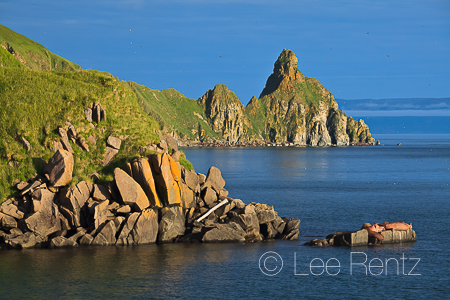

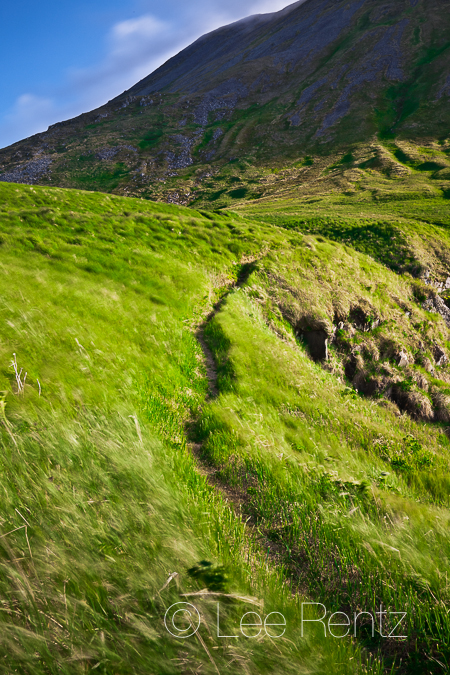

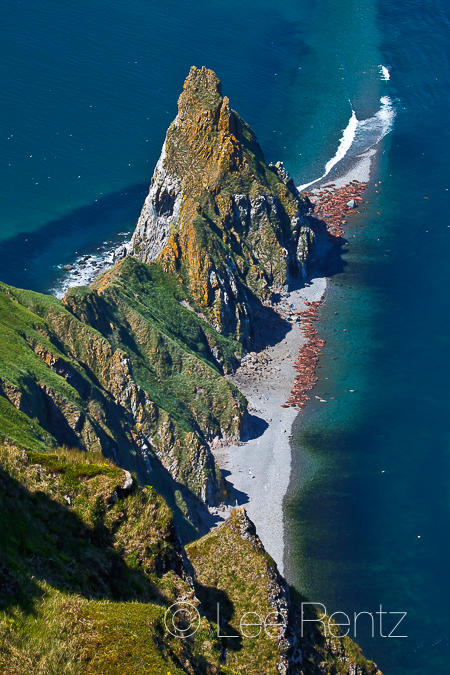

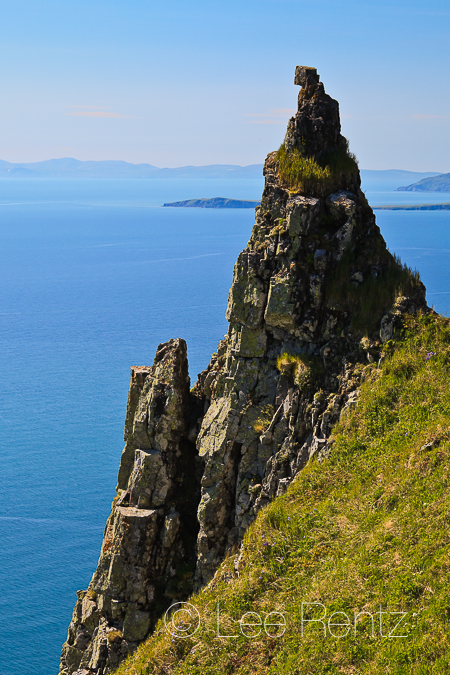


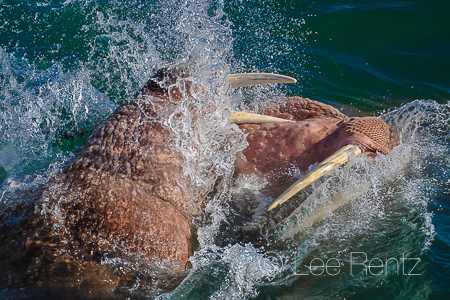
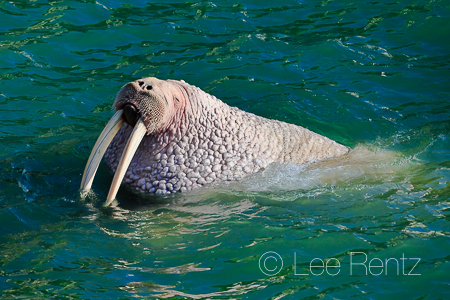

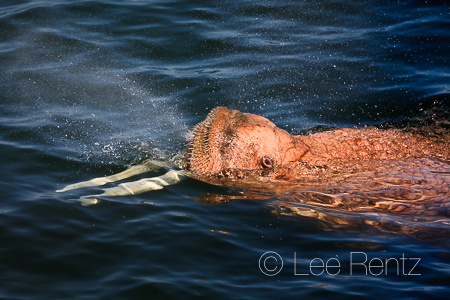

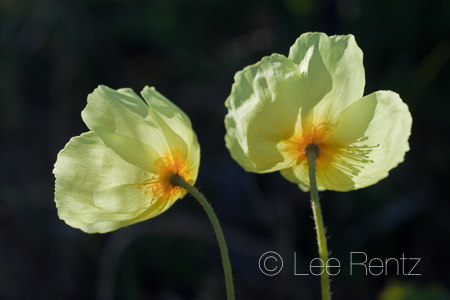
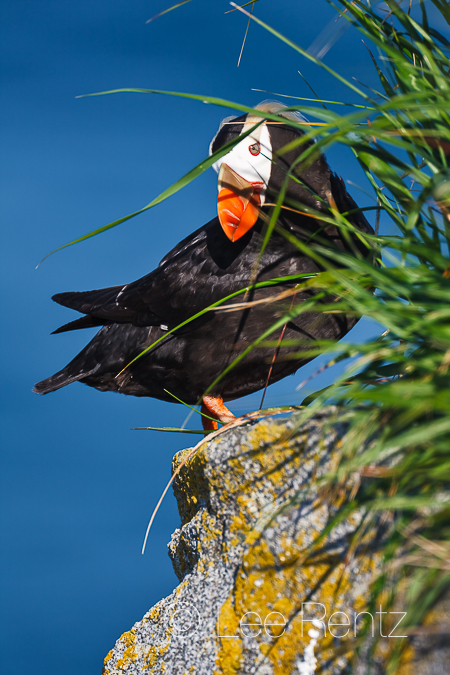

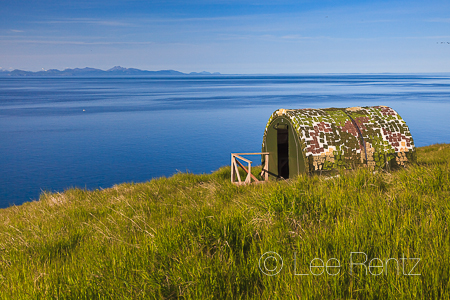
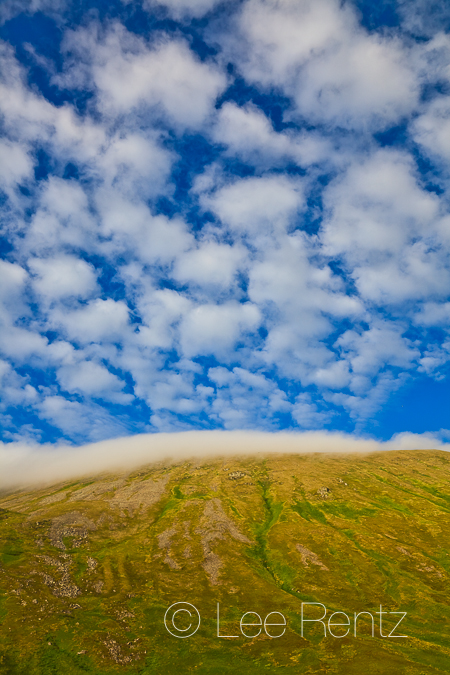



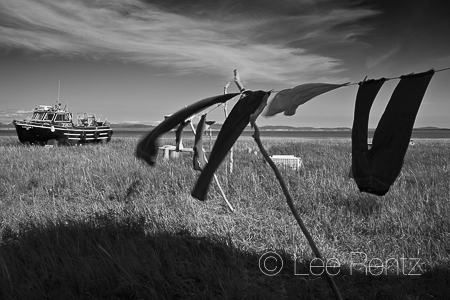










 A swirling galaxy of Northern Shovelers feeding
A swirling galaxy of Northern Shovelers feeding








